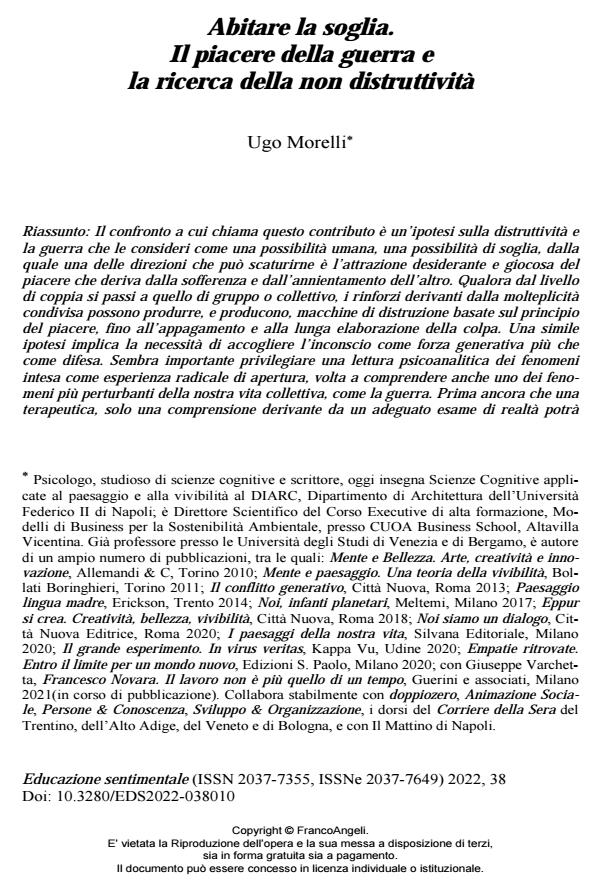Abitare la soglia. Il piacere della guerra e la ricerca della non distruttività
Journal title EDUCAZIONE SENTIMENTALE
Author/s Ugo Morelli
Publishing Year 2023 Issue 2022/38
Language Italian Pages 10 P. 91-100 File size 177 KB
DOI 10.3280/EDS2022-038010
DOI is like a bar code for intellectual property: to have more infomation
click here
Below, you can see the article first page
If you want to buy this article in PDF format, you can do it, following the instructions to buy download credits

FrancoAngeli is member of Publishers International Linking Association, Inc (PILA), a not-for-profit association which run the CrossRef service enabling links to and from online scholarly content.
The comparison to which this contribution calls is a hypothesis on destructive-ness and war that considers them as a human possibility, a threshold possibility, from which one of the directions that can arise is the desiring and playful attrac-tion of the pleasure that derives from suffering and from the annihilation of the other. If we pass from the level of the couple to that of a group or collective, the reinforcements deriving from the shared multiplicity can produce, and do pro-duce, machines of destruction based on the principle of pleasure, up to the satis-faction and long elaboration of guilt. Such a hypothesis implies the need to wel-come the unconscious as a generative force rather than a defense. It seems im-portant to favor a psychoanalytic reading of phenomena understood as a radical experience of openness, aimed at understanding one of the most disturbing phe-nomena of our collective life, such as war. Even before a therapeutic, only an un-derstanding deriving from an adequate examination of reality will open to some possibility of intervention to prevent human destructiveness. For now, we are far from a reliable understanding, and moralizing doesn’t help.
Keywords: threshold, destructiveness, pleasure, power, conflict, war.
Ugo Morelli, Abitare la soglia. Il piacere della guerra e la ricerca della non distruttività in "EDUCAZIONE SENTIMENTALE" 38/2022, pp 91-100, DOI: 10.3280/EDS2022-038010